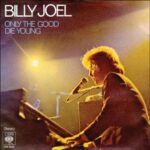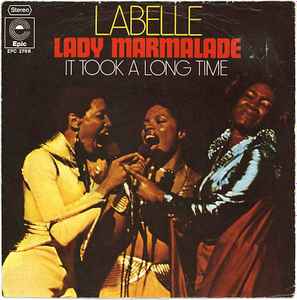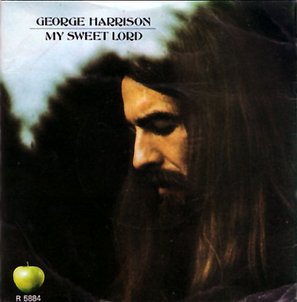 Billy Joel’s “Only The Good Die Young” is one of those songs that perfectly encapsulates the tension between youthful exuberance and societal expectation, a track that has sparked controversy, debate, and endless sing-alongs since its release in 1977 on the album The Stranger. From its opening piano chords to its irresistibly catchy chorus, the song is a masterclass in blending storytelling, melody, and energetic performance. Joel, already known for his narrative-driven songwriting and accessible pop sensibilities, pushed boundaries with this track, creating a work that is both playful and provocative, serious and undeniably fun. It is a song that resonates on multiple levels: as a pop-rock anthem, as a commentary on youth and rebellion, and as a cultural lightning rod.
Billy Joel’s “Only The Good Die Young” is one of those songs that perfectly encapsulates the tension between youthful exuberance and societal expectation, a track that has sparked controversy, debate, and endless sing-alongs since its release in 1977 on the album The Stranger. From its opening piano chords to its irresistibly catchy chorus, the song is a masterclass in blending storytelling, melody, and energetic performance. Joel, already known for his narrative-driven songwriting and accessible pop sensibilities, pushed boundaries with this track, creating a work that is both playful and provocative, serious and undeniably fun. It is a song that resonates on multiple levels: as a pop-rock anthem, as a commentary on youth and rebellion, and as a cultural lightning rod.
The track opens with a driving piano line, quintessential Billy Joel, immediately establishing a sense of urgency and anticipation. This piano motif serves as both rhythmic engine and melodic anchor, providing the perfect foundation for the song’s storytelling. Joel’s voice enters with a confident, almost teasing tone, delivering lyrics that are at once flirtatious and assertive. The combination of piano, bass, and percussion creates a rich, dynamic soundscape that captures the attention of the listener instantly. The energy is palpable, and the track feels alive from the first note, compelling listeners to engage both emotionally and physically, tapping along to the beat or nodding their heads in rhythm.
Lyrically, “Only The Good Die Young” is notable for its provocative narrative. The song tells the story of a young man attempting to woo a conservative Catholic girl, urging her to cast aside societal and religious expectations to embrace love, desire, and the fleeting nature of youth. Lines like “You Catholic girls start much too late” and “Only the good die young” highlight the tension between the constraints imposed by religion and tradition and the hedonistic urge of youth. Joel’s lyrics walk a fine line between playful flirtation and social commentary, capturing the spirit of rebellion that defined much of 1970s pop culture. The narrative is personal yet universal, resonating with listeners who have ever felt constrained by rules or expectations and offering a tongue-in-cheek exploration of the desire to seize the moment.
Musically, the song exemplifies Joel’s skill in crafting pop-rock compositions that are both accessible and sophisticated. The interplay between piano and rhythm section drives the song forward, while the guitar lines add texture without overshadowing the vocals. Joel’s voice, confident and slightly mischievous, navigates the melody with ease, accentuating the playful defiance embedded in the lyrics. The chorus is infectious, with its repeated refrain serving as both a hook and a thematic statement. It’s a line that’s immediately memorable, easy to sing along with, and emotionally resonant, encapsulating the tension between innocence, experience, and mortality that lies at the heart of the track.
The controversy surrounding “Only The Good Die Young” is almost as famous as the song itself. Upon its release, the track was banned by some radio stations due to its perceived anti-religious message. Critics accused Joel of encouraging promiscuity and disrespecting Catholic values, and the song became a focal point in debates about morality, censorship, and popular culture. Rather than dampening its appeal, the controversy amplified it, turning the track into a cultural phenomenon. The very act of being banned only added to its allure, giving it the aura of forbidden fruit and reinforcing the rebellious energy that Joel captured so effectively. The song’s success despite—or perhaps because of—the controversy demonstrates its power to engage, provoke, and endure.
The instrumentation in “Only The Good Die Young” is deceptively complex. While the song feels straightforward, there is a careful orchestration at work. The rhythm section is tight and propulsive, keeping the track moving with an infectious momentum. The piano, always the centerpiece, not only carries the melody but punctuates the lyrics, adding emphasis to Joel’s playful insinuations. Guitars, subtly layered, provide harmonic support and occasional flourishes, enriching the sonic texture without overwhelming the primary melodic elements. This careful balancing of elements allows the song to feel full and dynamic, yet it never loses its clarity or focus, demonstrating Joel’s mastery of pop-rock composition and arrangement.
The song’s chorus is particularly effective, both musically and thematically. “Only the good die young” is repeated with increasing intensity, each iteration building energy and reinforcing the song’s central tension. This phrase captures the essence of the track: the idea that rules, conventions, and even morality can be a form of restraint, and that vitality and rebellion are essential components of youth. The repetition of the line transforms it into a mantra, an anthem for those seeking liberation from societal constraints. Joel’s vocal delivery during the chorus is both commanding and playful, emphasizing the tease inherent in the lyrics while driving home the song’s infectious energy.
“Only The Good Die Young” also exemplifies Joel’s ability to blend storytelling and music seamlessly. The narrative unfolds naturally, with verses building context and characters, leading to a chorus that serves as both emotional and thematic release. The song is cinematic in its construction, painting vivid images of youthful flirtation, desire, and defiance. Joel’s use of specific, relatable details makes the narrative engaging, while the universal themes of temptation, mortality, and rebellion ensure that the song resonates with a broad audience. The storytelling is enhanced by the musical arrangement, with each instrumental element reflecting the narrative’s tension, playfulness, and momentum.
The song’s impact on Joel’s career cannot be overstated. As part of the The Stranger album, “Only The Good Die Young” helped solidify his status as a major figure in popular music, demonstrating his ability to blend pop sensibilities with rock energy and lyrical sophistication. The track’s popularity contributed to the album’s commercial success, which in turn propelled Joel to greater prominence as both a performer and songwriter. Its enduring appeal has ensured its place in his live performances for decades, where it continues to energize audiences and elicit enthusiastic sing-alongs. The song’s longevity is a testament to its construction, energy, and universal themes, as well as Joel’s skill as a performer and storyteller.
The song’s rhythmic drive is another critical element of its appeal. From the start, the combination of piano, bass, and drums creates an infectious groove that compels movement and engagement. The syncopation, accents, and dynamic shifts within the rhythm section provide a sense of excitement and unpredictability, mirroring the playful tension within the lyrics. This rhythmic foundation allows the song to function not just as a narrative, but as an experience, inviting listeners to engage physically as well as emotionally. The groove is unmistakably Joel, bridging pop, rock, and a hint of jazz sensibility in its rhythmic sophistication.
The vocal performance in “Only The Good Die Young” is equally crucial to its success. Joel delivers the lyrics with a mix of charm, wit, and persuasive energy that captures the flirtatious, rebellious spirit of the song. His phrasing emphasizes key words and lines, enhancing the narrative and reinforcing the song’s playful, provocative nature. Harmonies and backing vocals add texture and depth, enhancing the chorus and reinforcing the sense of communal engagement that the track encourages. Joel’s vocal approach ensures that the song feels alive, engaging, and emotionally resonant, allowing listeners to connect with both the story and the energy of the music.
“Only The Good Die Young” also exemplifies Joel’s skill in crafting memorable hooks. The combination of piano motif, vocal phrasing, and lyrical refrain creates a track that is instantly recognizable, even after a single listen. The hooks are woven into the song seamlessly, serving both musical and narrative purposes. They advance the story, highlight key thematic elements, and provide moments of emotional release. The effectiveness of these hooks has contributed to the song’s enduring popularity, ensuring its continued relevance on radio, playlists, and live stages decades after its initial release.
The cultural resonance of “Only The Good Die Young” extends beyond its musical qualities. The song captures a specific moment in late-70s American pop culture, reflecting attitudes toward youth, sexuality, religion, and rebellion. It engages with these themes in a playful yet provocative way, offering a commentary on societal expectations while maintaining a lightness and accessibility that broadens its appeal. The controversy it generated reflects the cultural tensions it engaged with, and the song’s continued popularity demonstrates its ability to speak across generations, offering both nostalgia and timeless insight.
Live performances of “Only The Good Die Young” highlight the song’s energy and engagement. Joel’s charisma, command of the piano, and connection with the audience bring the track to life, transforming it from a recording into a dynamic experience. The call-and-response elements, vocal inflections, and interactive energy of live renditions reinforce the song’s themes of communal engagement, rebellion, and fun. Concert-goers are invited to sing along, clap, and revel in the performance, creating a sense of shared experience that mirrors the narrative’s flirtatious and playful nature.
The song’s production also contributes to its impact. The clarity of the mix, the balance between instruments and vocals, and the emphasis on rhythmic and melodic interplay create a sound that is both polished and lively. Each element is distinct yet integrated, ensuring that the listener can appreciate the complexity of the arrangement while still being swept up in the song’s infectious energy. The production choices enhance the narrative, rhythm, and emotional resonance, making “Only The Good Die Young” a cohesive, engaging, and timeless track.
Ultimately, “Only The Good Die Young” endures because it combines clever storytelling, infectious energy, sophisticated musicality, and universal themes in a way that few songs can. It captures the spirit of youthful rebellion and flirtation, the thrill of temptation, and the tension between social expectation and personal desire. Joel’s ability to balance narrative, melody, and performance creates a track that is as intellectually engaging as it is viscerally enjoyable. The song invites listeners to both think and move, to laugh and reflect, and to celebrate the intensity and brevity of youth.
In conclusion, Billy Joel’s “Only The Good Die Young” is more than just a pop-rock hit—it is a cultural touchstone, a musical narrative, and a celebration of youth, rebellion, and playful defiance. Its infectious piano, compelling rhythm section, memorable chorus, and provocative lyrics ensure its place as one of Joel’s most iconic works. The track’s blend of musical craftsmanship, narrative skill, and cultural resonance allows it to endure across decades, remaining relevant, engaging, and deeply enjoyable. It is a song that invites participation, reflection, and celebration, embodying the spirit of youthful energy and the timeless appeal of great pop-rock music.
By combining storytelling, musicality, and cultural commentary, “Only The Good Die Young” continues to captivate listeners, proving that Billy Joel’s genius lies not only in crafting catchy tunes but in creating songs that resonate on multiple levels—emotionally, socially, and musically—making it an enduring classic that remains as vibrant and compelling today as it was at its release.


